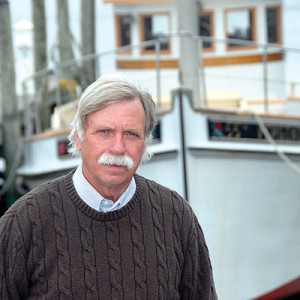Virginia Gov. Glenn Youngkin has awarded a $250,000 blue catfish infrastructure “reimbursable” state funded grant to Sea Farms, Inc. of Hayes, Va., which will enable the firm to purchase a blast freezing system and expand its storage freezer capacity.
During the 1970s and ‘80s blue catfish were introduced to the James, Rappahannock and York river basins on Chesapeake Bay as a new recreational fish by the Virginia Department of Wildlife Resources. Blue cats are native to Mississippi, Ohio, Missouri and Rio Grande river basins. The fish have been stocked for fishing in 20 states.
The Virginia blue catfish quickly spread throughout the Bay’s watershed into nearly every major tributary and are now being seen in North Carolina waters too. Blue catfish eat shad, herring, striped bass, menhaden, clams and blue crabs, and there is now concern that the large catfish population is having a detrimental impact on the populations of these species.
The state of Virginia is encouraging the growth of a commercial blue catfish fishery to combat that negative impact. The state legislature voted in its last session to allocate a $250,000 grant to further expand the fishery.
There are currently four USDA certified wild blue catfish “cutting” houses in the state. Sea Farms Inc. has been one of those USDA approved catfish processing houses since 2018.

Sea Farms Inc. is owned by Ron Sopko, 70, and his two sons Chris and Tom. After graduating from high school in 1972, Ron went to work on the water digging mussels in Long Island waters. Over the years he learned the water business by working in just about all of the mid-Atlantic fisheries before moving to Florida in 1984 to start a wholesale clam business.
Unhappy with his lifestyle in Florida, Sopko moved his family to Virginia in 1987 and started Sea Farms Inc. a multi-facet wholesale processing business that is one of just a few in the state that is certified in processing all types of seafood. This includes shucking oysters, picking crabs, packaging shell oysters and clams and processing blue catfish, flounder, cobia, tuna, salmon, halibut, mahi, swordfish, and striped bass. The firm also runs an oyster farm growing oysters from larvae to mature, harvestable oysters.

“We are excited about receiving the grant,” said Chris Sopko, Sea Farms Inc.’s vice president of operations. “It is a reimbursable grant, which means we have to purchase the equipment, pay for it and then request funding from the state up to $250,000. We plan to use the grant funds to purchase a blast freezing system and to expand our freezer capacity for storage of large quantities of catfish fillets.”
Chris Sopko says that the challenge to successfully expand Virginia’s wild blue catfish processing capacity is in developing sales and markets that will sustain the processing growth.
The firm has a plan to offer catfish fillets to public and private school cafeterias and to the state’s prison cafeteria systems as a way to expand that market.
“We sell wholesale fillets for about $5 a pound which we think is reasonable for school and prison cafeterias to purchase,” says Chris Sopko.
He also says that another issue with processing and selling wild blue catfish is that the meat yield on catfish is 25 percent where as in comparison striped bass yield 35 percent of marketable meat. “We certainly cannot pay watermen what we pay for striped bass,” says Chris Sopko.

He also says that another factor is that the farmed catfish business controls a large portion of the nationwide market share. Mississippi fish farmers produce over 50 percent of U.S. farmed catfish with Alabama, Arkansas, Louisiana and Mississippi together producing 94 percent of all U.S. farm-raised catfish. Farmed catfish can be harvested and processed at the best size for meat yield. “A four-pound catfish is the best size for yield,” says Chris Sopko. “We can’t just buy 4-pound catfish from watermen.”
The farmed catfish lobby played an instrumental role in encouraging changes in USDA regulations requiring wild-catfish plants to meet USDA standards. This resulted in wholesale prices for wild catfish fillets increasing from $2 per pound to $4.50, says Ron Sopko. “When USDA certification shut down so many of the small cutting houses, it took a lot of fish off the market and resulted in increased wholesale prices for those of us that were USDA certified,” he says.
Virginia House Bill 1135 that passed on the floor of the house, 93-4, on Feb. 8 specifically directs the Department of Agriculture and Consumer Services, “in collaboration with certain stakeholders, to . . . evaluate strategies to reduce the negative ecological effects of blue catfish and to research ways to increase sales and marketing of blue catfish.” The bill was sponsored by Delegate Keith Hodges of Urbanna, Va..
Hodges said that he is going to recommend that the House allocate another $250,000 from this fiscal budget to fund a second blue catfish grant. He also plans to propose $500,000 in grant funds out of the next fiscal year state budget. According to Hodges, Gov. Youngkin’s 2024-25 budget proposal has an additional $250,000 too for catfish grant funds.
In early September 2023 the Virginia General Assembly voted down a proposal to invest $2 million in a grant program to establish the Catfish Industries Development Program, but instead voted to start off the program with $250,000 in state seed monies.
“I see this first grant to Sea Farms as just the beginning of the state moving forward with a successful wild blue catfish fishery that will help control the population and create a profitable fishery for watermen and others on the bay,” said Hodges.








